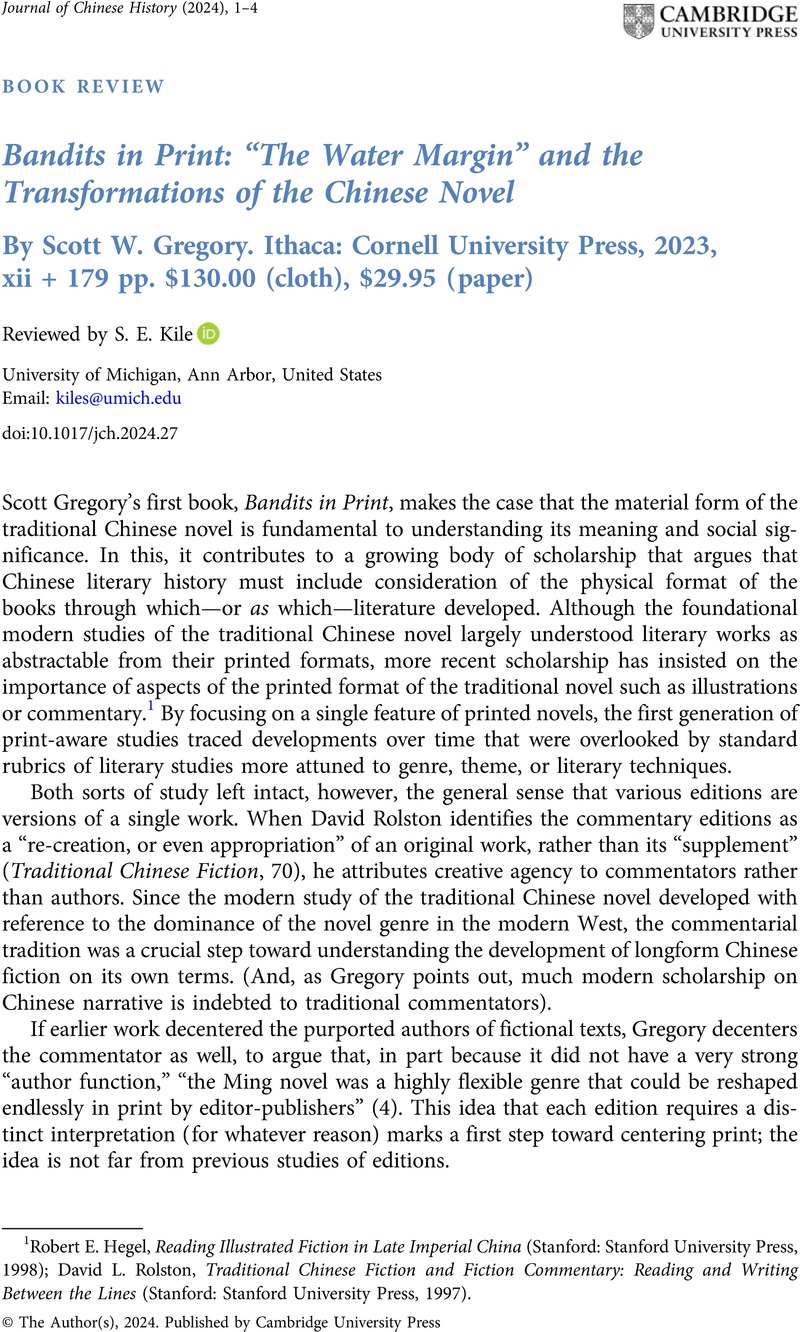No CrossRef data available.
Article contents
Bandits in Print: “The Water Margin” and the Transformations of the Chinese Novel By Scott W. Gregory. Ithaca: Cornell University Press, 2023, xii + 179 pp. $130.00 (cloth), $29.95 (paper)
Review products
Bandits in Print: “The Water Margin” and the Transformations of the Chinese Novel By Scott W. Gregory. Ithaca: Cornell University Press, 2023, xii + 179 pp. $130.00 (cloth), $29.95 (paper)
Published online by Cambridge University Press: 28 October 2024
Abstract
An abstract is not available for this content so a preview has been provided. Please use the Get access link above for information on how to access this content.

Information
- Type
- Book Review
- Information
- Journal of Chinese History 中國歷史學刊 , Volume 9 , Special Issue 2: On Their Own Terms: Experts in Chinese History , July 2025 , pp. 431 - 434
- Copyright
- © The Author(s), 2024. Published by Cambridge University Press
References
1 Hegel, Robert E., Reading Illustrated Fiction in Late Imperial China (Stanford: Stanford University Press, 1998)Google Scholar; Rolston, David L., Traditional Chinese Fiction and Fiction Commentary: Reading and Writing Between the Lines (Stanford: Stanford University Press, 1997)CrossRefGoogle Scholar.


